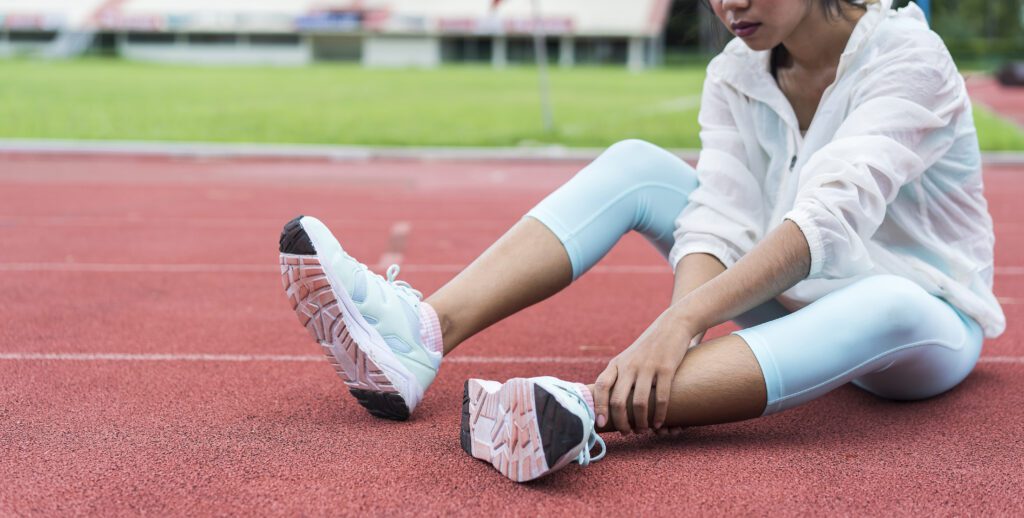Back To School Sports And Foot Health

Sports teach children a lot of great skills, but they can also cause injuries. In fact, one out of every three childhood injuries are a result of a sports-related activity. And the most common areas injured by young athletes are the ankle and the knee. With school sports starting up, injuries may be more common.
But that doesn’t mean your young athlete is destined to have an injury. Fortunately, there are plenty of preventative measures you can take to ensure that your child or teen doesn’t suffer a sports-related injury to their feet and legs.
Let’s take a look at some of the ways you can help protect your child and their feet as they head back to school.
BUY THE RIGHT SHOES
Foot pain isn’t normal, no matter how old you are. For children, a lot of their foot pain can come down to whether or not they’re wearing the correct shoes.
It’s important to pick a pair of shoes that fit well and are appropriate to the activity that your child is engaging in. While flip-flops may be fun to wear during the summer, they do nothing for the foot health of your child.
Moreover, you want to avoid ordering shoes for your child online and instead visit a brick-and-mortar store.
“Children’s feet can still be growing into the mid-teens,” says Dr. Matthew Robison, owner of Aboite Podiatry. “The sizes of footwear are really guidelines, so there’s no real substitute for going in and having your child’s foot measured for a proper fit.”
Make sure to go shopping for shoes at the end of the day, when your child’s foot will be at its largest. When you’re purchasing new shoes for your young athlete, you want to make sure that they fit correctly from day one.
However, it will take a little time for the shoes to wear in, specifically to the feet of your child. Have your child wear their new shoes around the house for several days before their first practice or game.
In a short amount of time, your child’s shoes will become softer and fit better, and it gives them an opportunity to become used to the shoe so they are less likely to roll their ankle while participating in school sports.
START SLOWLY
Make sure that your student-athlete is properly warming up before any strenuous exercise.
Having a summer off between sports and vigorous exercise means that your muscles aren’t in the same shape they were in at the end of the season.
Encourage your child to start getting back into the habit of stretching and exercising as the summer comes to a close. A mix of static exercises, like toe touches, and dynamic exercises, like jumping jacks, will help loosen their muscles and prepare them for the season.
The most common ankle injury for student-athletes is a sprained ligament. While a sprained ankle can never be fully prevented, performing stretching and range-of-motion exercises for the ankle can help.
“One benefit of exercising and strengthening your ankles is that it gives your body better proprioception, your natural awareness of self-movement, and the position of your body,” Dr. Robison says. “If you’ve exercised your ankles properly and you stumble, your body will have a better chance to unconsciously compensate and recover without injuring yourself.”
Consider the following ankle mobility exercises to help prevent a sprained ankle:
- Ankle Circles
- Single Leg Balance
- Standing Heel Lifts
- Ankle Flexions
- Toe-Heel Walks
- Lunges
- Walking Lunges
Easing back into an exercise routine at the end of summer and ensuring a proper 10- to 15-minute exercise warm-up prior to active training can help prevent sports injuries as your student-athlete returns to the school sports schedule.
GET REGULAR CHECK-UPS
A regular sports physical at the start of the season is an important step in your child’s overall health.
Visiting a podiatrist should also be a part of your preseason checklist for an individualized assessment.
“If you bring your child in for a podiatric check-up early in the season, we have a better chance at addressing and preventing foot pain,” Dr. Robision says. “We can analyze your child’s movement and foot health in order to catch problems before they develop.”
TAKE CARE OF INJURIES PROMPTLY
If your child does get injured while playing sports, it’s critical that they receive care quickly.
“It’s tempting to write-off foot pain as something that can be ‘walked off’ and slept off,” Dr. Robison says. “But foot pain isn’t normal. If your child has a foot or ankle injury after a game and it’s not better after a day of R.I.C.E., you need to see a podiatrist.” (R.I.C.E. stands for rest, ice, compression, and elevation).
Dr. Robison explains that injuries to the feet and ankles that go uncared for can turn into life-long injuries.
Your child may not tell you if they’re in pain from an injury, so watch for things such as a sudden limp while they’re running, changes in their stance, or unusual alterations to their exercise or play style.
GET PREPPED FOR THE SEASON
Before the school sports season starts, schedule an appointment for your child to see the podiatrists at Aboite Podiatry to get them started on the right foot this season.
Our doctors are trained to identify and treat ankle and foot disorders before they become a problem for your child. Make an appointment today by calling 260-436-3579.
